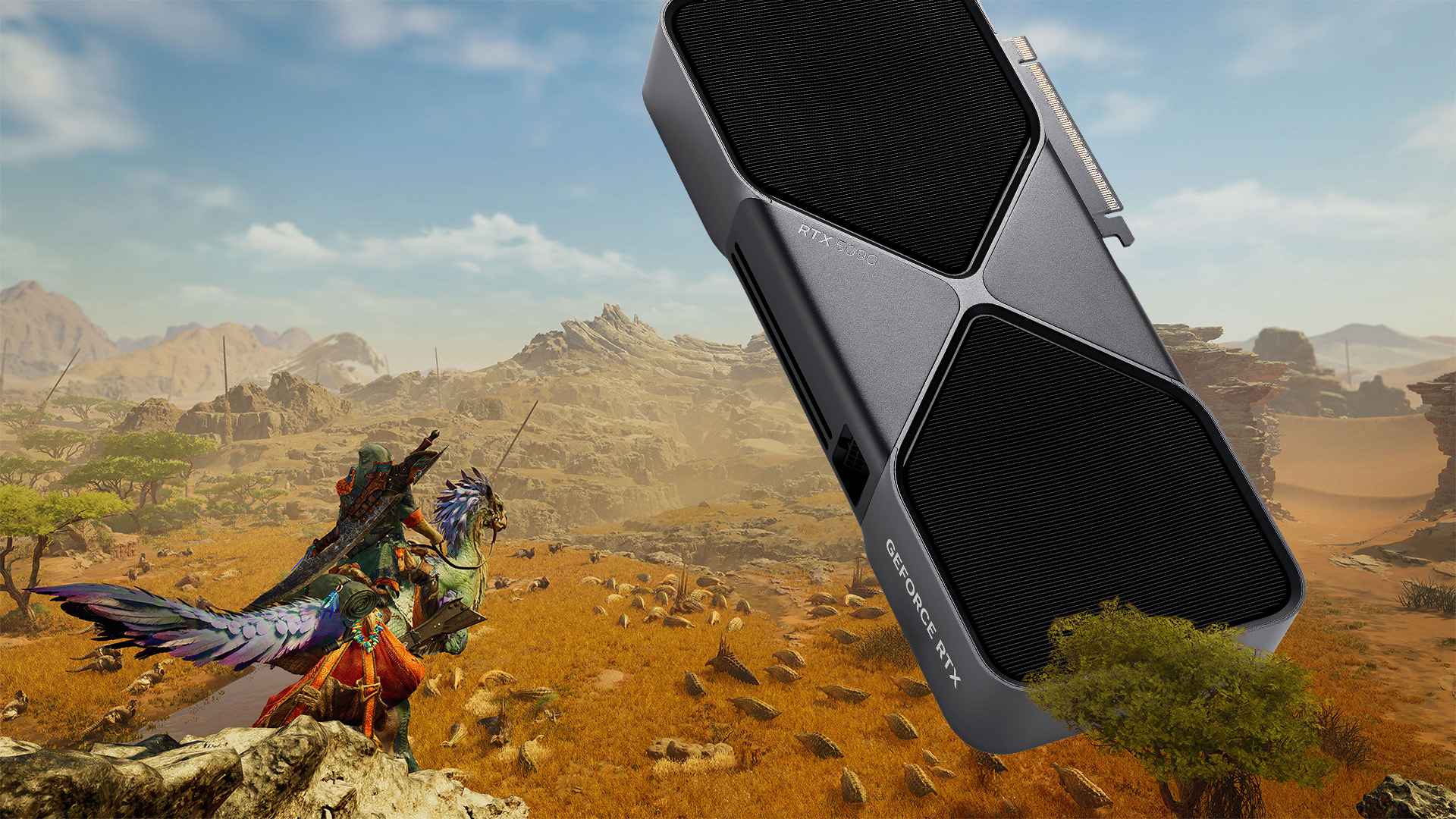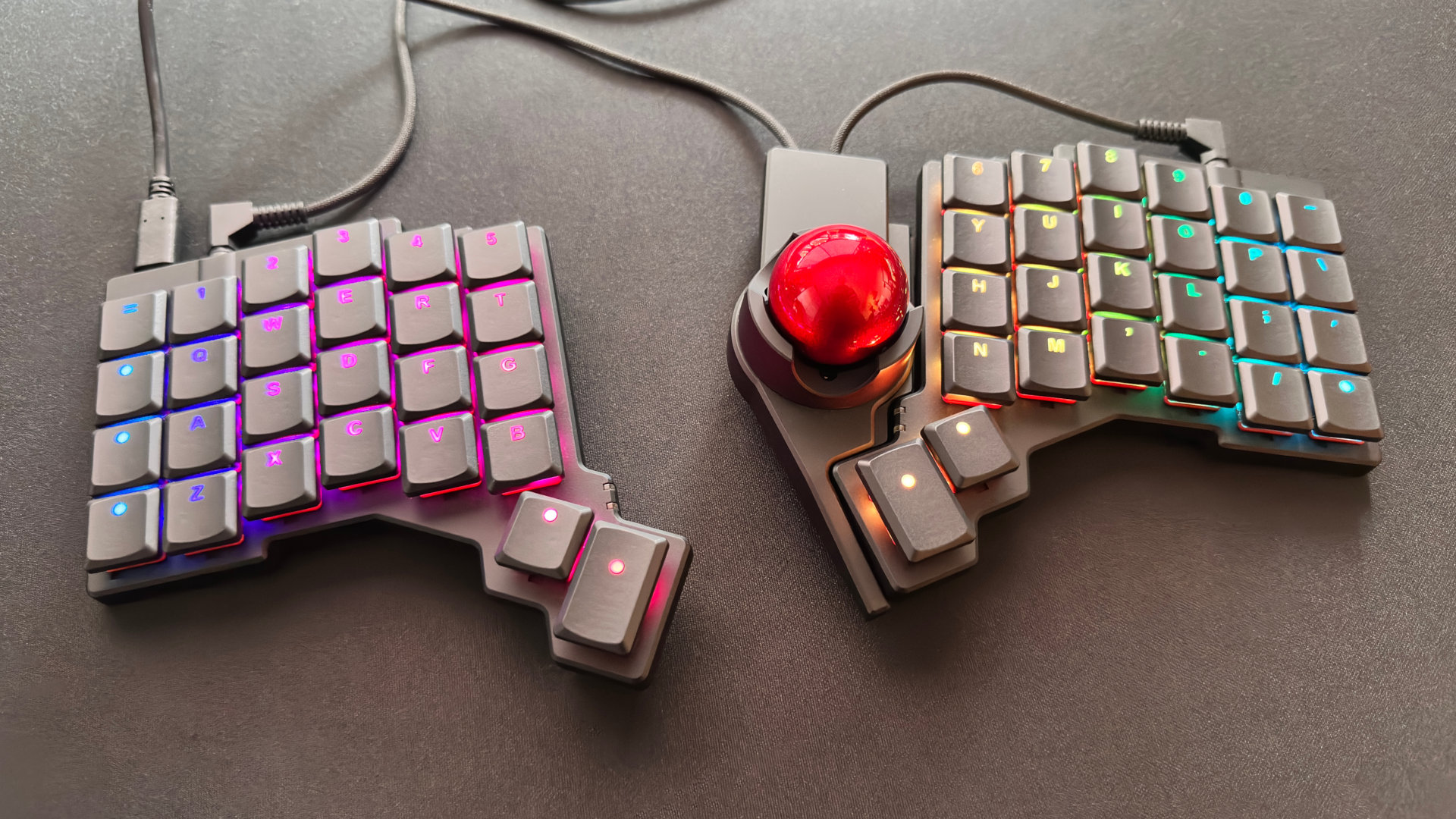Nvidia didn't send the Monster Hunter Wilds devs any RTX 5000 cards before their CES reveal, so official DLSS 4 support is still in progress
On the bright side, you can already use DLSS 4 in Monster Hunter Wilds thanks to DLSS Swapper.

With Monster Hunter Wilds likely to be one of the biggest new games of 2025, I thought there was a chance that Capcom and Nvidia would be teaming up to ensure that the PC version of Wilds was an absolute showstopper. Typically Nvidia and AMD collaborate with developers to test games before release and ensure that their drivers are ready for launch day; surely they also sometimes seed their new hardware with major developers ahead of release too, right? When I spoke with Monster Hunter Wilds director Yuya Tokuda back in January, just a week after the announcement of the RTX 5000 series, I asked if his team had gotten to play with the new hardware yet—and if we could expect to see DLSS 4 support in Wilds on day one.
Somewhat surprisingly, no and no.
"We certainly haven't received anything or any notice within the Monster Hunter Wilds team," Tokuda told me on January 15. That was a full nine days after Nvidia announced the RTX 5000 series at CES, though well before the cards actually hit the streets (hopefully no one on the Monster Hunter team had to camp out in front of an electronics store in Akihabara to get ahold of a 5090).
Capcom may have gotten a shipment of shiny new GPUs from Nvidia since I interviewed Tokuda in Los Angeles, but I thought if any game developer was likely to get its hands on the hardware pre-release, it'd be the studio behind what's likely to be the biggest PC game of the year. Shows what I know!
When can we expect to see Nvidia's newly announced and seemingly quite impressive DLSS 4 in Monster Hunter Wilds, then? Wilds' beta and its PC benchmark both support DLSS as well as AMD and Intel's AI-driven upscaling options, but they're not exactly rocking the newest version of Nvidia's tech: both versions of the game use DLSS 3.7.10, released in mid-2024. I asked Tokuda, and he didn't give a precise answer—but safe to say it's going to be a bit.
"We always need to be able to test first, to be able to tell if we can support it or not, so it's hard to tell at this point in time, but we do always try to test with the most recent graphics cards," Tokuda said.
The good news for the tinkerers out there is that you don't actually have to wait for Capcom to implement DLSS 4 support to use it in Monster Hunter Wilds. After running the game's benchmark, I used the latest version of DLSS Swapper to upgrade the DLSS version to the latest and greatest, which, to be clear, isn't exclusive to the RTX 5000 series. It runs well on my RTX 3070, and should be helpful for those of us with older graphics cards who are forced to drop from "balanced" to "performance" mode to keep demanding games like Monster Hunter Wilds chugging along at 60 fps.
Keep up to date with the most important stories and the best deals, as picked by the PC Gamer team.

Wes has been covering games and hardware for more than 10 years, first at tech sites like The Wirecutter and Tested before joining the PC Gamer team in 2014. Wes plays a little bit of everything, but he'll always jump at the chance to cover emulation and Japanese games.
When he's not obsessively optimizing and re-optimizing a tangle of conveyor belts in Satisfactory (it's really becoming a problem), he's probably playing a 20-year-old Final Fantasy or some opaque ASCII roguelike. With a focus on writing and editing features, he seeks out personal stories and in-depth histories from the corners of PC gaming and its niche communities. 50% pizza by volume (deep dish, to be specific).


